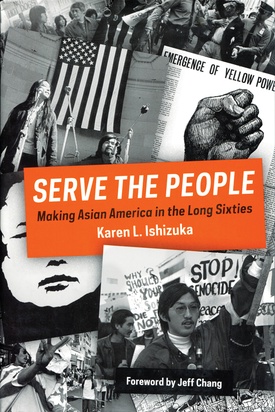In commemoration of the 75th anniversary of Japan’s attack on Pearl Harbor, which prompted the U.S. government to imprison 120,000 Americans of Japanese ancestry (two-thirds U.S. citizens) in concentration camps, a double-edged protest march was staged on the night of December 7, 2016, in Los Angeles’s Little Tokyo community. Among the protestors was 80-year-old Sansei activist Jim Matsuoka, who at age seven was impounded with his family and 10,000 other Japanese Americans at eastern California’s Manzanar, one of 10 War Relocation Authority (WRA)-administered World War II Nikkei concentration camps. Like the other protest participants, Matsuoka voiced his and his community’s solidarity with the U.S. Muslim community―presently under assault and threatened with governmental registration by President-elect Donald Trump―through chanting “Say it loud, say it clear, Muslims are welcome here.” To Matsuoka, little had changed in the last 75 years: “There was racism then and there is racism now.” Therefore, he could not―and would not―stand idly by and let what had happened to Japanese Americans now happen to Muslim Americans.
In Serve the People, Karen Ishizuka pays tribute to those mostly youthful Asian Americans of the 1960s and early 1970s who, like Jim Matsuoka, self-consciously and purposely coalesced into what progressively took shape as the Asian American movement, replete with a correlative new identity for its movers and shakers. Embracing activist individuals and groups across America, this movement spearheaded a multi-faceted and multicultural struggle for democracy, social justice, and dignity within the U.S. and challenged their country’s oppression of human rights both at home and throughout the world. Notwithstanding that this movement has been heretofore overshadowed by those of other contemporary activists of color and still others linked together within a variety of different social categories, Ishizuka makes a powerful case for the importance of the Asian American movement both in terms of its consequential historical deeds and in the usable legacy it has bestowed upon future generational cohorts of progressive Asian Americans. Still, as Jeff Chang reminds readers in his insightful foreword to Ishizuka’s book, “while [she is] committed to telling the story of her peers and her time, she is hardly a triumphalist. She is critical where the story demands it.”
Along with many others, I have long been impressed by the artistic and intellectual productions in which Karen Ishizuka (a Sansei pioneer in the movement she depicts in Serve the People) has played such an instrumental role. I first witnessed her brilliance in a trio of outstanding Japanese American National Museum (JANM) documentary films, all directed by her visionary husband Bob Nakamura and for which she served as the producer and writer: Something Strong Within (1994), crafted entirely out of home movie footage taken by inmates in the WRA detention camps; Looking Like the Enemy (1996), focused on the wartime experiences of Japanese American veterans in World War II, Korea, and Vietnam; and Infinite Shades of Gray (2001), centered on the iterations of acclaimed Issei photographer Toyo Miyatake’s career. I later witnessed the fruits of Ishizuka’s historical scholarship in her 2006 University of Illinois classic volume Lost and Found: Reclaiming the Japanese American Incarceration, in which she related through history and memory how a critically acclaimed 1994 JANM exhibition she curated, America’s Concentration Camps: Remembering the Japanese American Experience,” was consumed and confronted by former inmates and visitors. In this volume, she also pondered “how the dual act of recovering―and recovering from―history necessitates private and public meditation between remembering and forgetting, speaking out and remaining silent.”
With this background in mind, my expectations for Serve the People were exceedingly high. But Ishizuka far surpassed them. The sagacity of the questions she poses and the manner in which she responds to them, the sophistication of her critical analysis, the animation and precision of her prose, the depth and breadth of her research sources, the vibrancy and diversity of her illustrative material, and the ethical force that sustains and consecrates her inquiry―all of these harmoniously combine to render what Gary Okihiro has correctly styled “Serve the People”: “a work of immense significance.”
SERVE THE PEOPLE: MAKING ASIAN AMERICA IN THE LONG SIXTIES
By Karen L. Ishizuka
(London: Verso, 2016, 288 pp., $29.95, hardcover)
*This article was originally published by Nichi Bei Weekly on January 1, 2017.
© 2017 Arthur A. Hansen / Nichi Bei Weekly








